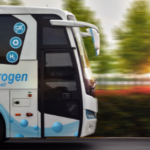
Explore How Kline Serves the Specialty Chemicals Sector
Explore How Kline Serves the Specialty Chemicals Sector Thank you for joining us the 17th Annual GPCA forum. For more information on Kline and what we can offer please click here to download the brochure. STAY INFORMED WITH RELATED REPORTS Ingredients in Professional Cleaning: Cross-Segment Analysis and Opportunities Ingredients for Household and Professional Cleaning



